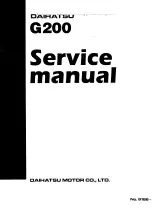
Your vehicle is equipped with a tire
pressure monitoring system (TPMS)
that turns on every time you start the
engine and monitors the pressure in
your tires while driving.
Each tire has its own pressure
sensor. If the air pressure of a tire
becomes significantly low, the
sensor in that tire immediately sends
a signal that causes the low tire
pressure indicator in the
instrumental panel and the
appropriate tire position indicator on
the tire pressure monitor on the
multi-information display (see page
) to come on.
For example, if you check and fill
your tires in a warm area, then drive
in extremely cold weather, the tire
pressure will be lower than
measured and could be underinflated
and cause the low tire pressure
indicator to come on. Or, if you
check and adjust your tire pressure
in cooler conditions, and drive into
extremely hot conditions, the tire
may become overinflated. However,
the low tire pressure indicator will
not come on if the tires are
overinflated.
When the low tire pressure indicator
is on, one or more of your tires is
significantly underinflated. The
multi-information display also shows
a ‘‘CHECK TIRE PRESSURE’’
message (see page ). You should
stop and check your tires as soon as
possible, and inflate them to the
proper pressure as indicated on the
vehicle’s tire information placard.
Driving on a significantly under-
inflated tire causes the tire to
overheat and can lead to tire failure.
Under-inflation also reduces fuel
efficiency and tire tread life, and may
affect the vehicle’s handling and
stopping ability.
Because tire pressure varies by
temperature and other conditions,
the low tire pressure indicator may
come on unexpectedly.
Refer to page
for tire inflation
guidelines.
CONTINUED
Low Tire Pressure
Indicator
Tire Pressure Monitoring System (TPMS)
D
riv
ing
365
06/08/12 19:07:06 31SJA620 0370
Main Menu
Table of Contents
Summary of Contents for 2007 Acura RL
Page 8: ...Main Menu ...
















































